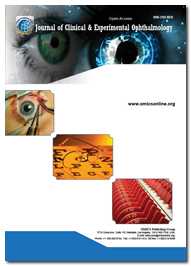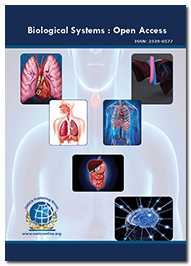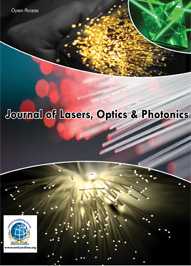Theme: Scientific eye for visual intelligence
Ophthalmology 2015
Global ophthalmologists meet has been very successful for many organization for realizing their dream to bring vision through Cataract Conferences, Upcoming Ophthalmology Conferences, Eye Care Conferences, Optometry Conferences, Vision science Conferences, Ophthalmologists Conferences, Ophthalmology Conferences, Ophthalmology Conferences 2018
The 5th International Conference on Clinical & Experimental Ophthalmology which is going to be held during August 04-06, 2015 at Valencia, Spain which brings together a unique and international mix of large and medium pharmaceutical, biotech and diagnostic companies, leading universities and clinical research institutions making the conference a perfect platform to share experience, foster collaborations across industry and academia, and evaluate emerging technologies across the globe. Ophthalmology 2015 conference series maximizes the opportunity to interact with and learn from your peers from across the country and across the globe it held with the discussions on Cornea and External Eye Disease, Retina and Retinal Disorders, Neuro-Ophthalmology, Glaucoma: Visual Field Loss, Ocular Microbiology and Immunology, Novel Approaches to Ophthalmology Therapeutics and many more.
OMICS International Organizes 300+ conferences, 500+workshops and 200+symposiums on Clinical, Medicine, Pharma and Science & Technology every year across USA, Europe, Asia, Middle East, Australia and UK with support from 1000 more scientific societies and Publishes 500 open access journals which contains over 30000 eminent personalities, reputed scientists as editorial board members.
Retinal disorders, optic atrophy, and lesions of the higher visual pathways are the main anatomical causes of visual loss in children. WHO reports that, 285 million people are estimated to be visually impaired worldwide: 39 million are blind and 246 have low vision. About 90% of the world’s visually impaired live in low-income settings 82% of people living with blindness are aged 50 and above. Globally, uncorrected refractive errors are the main cause of moderate and severe visual impairment; cataracts remain the leading cause of blindness in middle- and low-income countries. Many European associations are involved in Ophthalmology and many eye banks are actively promoting the donation of eyes in Europe, addressing a gap in the ophthalmic market, the global ophthalmic market was valued at $10.3 billion in 2010 and is estimated to reach $13.2 billion in 2017.
The conference series provides the platform to all the young researchers to share their valuable studies and also gives an opporutnity to intereact and learn with the experts of Ophthalmology.
For more details, please visit: Ophthalmology analysis report
The retina is a thin layer of tissue on the inside back wall of your eye. It contains millions of light-sensitive cells and other nerve cells that receive and organize visual information. Your retina sends this information to your brain through your optic nerve, enabling you to see. Retinal degenerative disorders such as Age-related macular degeneration and Myopic macular degeneration affecting young and old from many cultures, races and ethnicities. The central area of the retina contains a high density of color-sensitive photoreceptor cells called cones which are responsible for color vision and hence any defect and alteration in the central area of the retina will lead to Color vision defects. On the other hand diseases like Diabetic retinopathy and Retinal tumors can also be responsible for the permanent vision loss if it is not treated on time. Historically, retinal disease has had a low priority in prevention of blindness programs in developing countries. There are several reasons for this. Firstly, it was thought that retinal disease was an uncommon cause of blindness in the developing world; secondly, that the results of treating retinal disease did not justify the effort and expense involved; and, thirdly, that the equipment required was too costly and unreliable for use in a developing country environment. Finally, there is a lack of skilled personnel with sub-specialty training in retinal disease. John Hopkins School of Medicine, UCSF School of Medicine, David Geffen School of Medicine and Mayo Medical School are the leading institutes associates with ophthalmology.
Cornea and External Eye Disease
Eye is composed of very sensitive and fragile tissues and every part of an eye serves its own function to maintain its normal vision. The cornea is the transparent front part of the eye that covers the iris, pupil, and anterior chamber. The cornea, with the anterior chamber and lens, refracts light, with the cornea accounting for approximately two-thirds of the eye's total optical power. But factors such as corneal ulceration, Epithelial keratitis & drug-induced epithelial keratitis, corneal regeneration, recurrent corneal erosion and miscellaneous corneal disorders can affect the cornea and ultimately lead to the external eye disease that could end up with permanent blindness. Hence investigation of corneal disease is carry out to mitigate the disease and methods like Contact lenses & vision correction is also use to cure the vision related problems and surgical procedure like corneal transplantation is used to transplant the cornea. According to international council of ophthalmology 2012 report there were 206,812 practicing ophthalmologists around the world and there are approximately 23,861 ophthalmologists in the United States, as per the records of American Medical Association.
Glaucoma is a multifactorial optic neuropathy that affects more than 50 million people and is the second leading cause of blindness worldwide. The role of intra ocular pressure (IOP) has been well documented as a major modifiable risk factor for glaucoma. Additionally, many glaucoma patients have a relatively low IOP, while some healthy individuals have a relatively high IOP. The disorders can be roughly divided into two main categories, open-angle glaucoma and closed-angle glaucoma. Impaired ocular blood flow regulation in open angle glaucoma as a risk of glaucoma has also been well established, especially over the past two decades. Pathophysiology of glaucoma indicates towards the increased in intraocular pressure which compresses and damages the optic nerve. Once the optic nerve is damaged, it fails to carry visual information to the brain and this result in loss of vision. The exact pathophysiology of glaucoma contributing to this is yet to be determined. Biomarkers for glaucoma have predictive use that could help and guide more specific therapy in some glaucoma patients. Endothelin in glaucoma treatment play a very key role in pathogenesis of glaucoma. Glaucoma accounts for over 10 million visits to physicians each year. In terms of Social Security benefits, lost income tax revenues, and health care expenditures, the cost to the U.S. government is estimated to be over $1.5 billion annually. The Glaucoma Research Society of Canada is the only Canadian non-profit organization solely dedicated to funding glaucoma research. Since 1989, it has raised more than two million dollars in support of 150 research projects. The Society funds 10 to 15% of all independent glaucoma research in Canada. Bascom Palmer and Wills Eye are the top researcher organization for glaucoma.
Neuro-ophthalmology is the incorporation of neurology and ophthalmology, often dealing with complex systemic diseases that have manifestations in the visual system. Cerebral Visual Impairment (CVI) includes all visual dysfunctions caused by damage to, or malfunctioning of, the retrochiasmatic visual pathways in the absence of damage to the anterior visual pathways or any major ocular disease. Myasthenia gravis is caused by a breakdown in the normal communication between nerves and muscles which leads to double vision, drooping eyelids and other muscles weakness which effecting the both i.e. neuromuscular activity and also vision. On the other hand nystagmus which is involuntary eye movement acquired in infancy or later in life that may result in reduced or limited vision. Factors like cerebral macular degeneration and chronic progressive external ophthalmoplegia also the major effecting part of neuro-ophthalmology. Diagnostic tools in neuro-ophthalmology are used to investigate and to treat the various condition of neuro-ophthalmology as Neonatal ocular examination are primarily performed to monitor the presence and progression of Retinopathy of Prematurity. University of Pennsylvania is currently working on neuro-ophthalmology project.
Ocular Microbiology and Immunology
Many of the viruses, bacteria, parasites, and fungi that can invade the human body are also capable of attacking the surface or interior of the eye. The natural tendency for immunologic disease to affect the eye derives from a number of factors such as Antibody-dependent & antibody-mediated diseases, Uveitis, intraocular inflammation and cell-mediated diseases. The immune system plays a critical role during transplantation and as the corneal transplantation has become increasingly common since the 1960s and over 40,000 transplants were performed in 1990 in the United States and Canada. The 5-year failure rate for corneal grafts is approximately 35%; corneal graft rejection is the most common cause of graft failure in the late postoperative period but with the recent development in immunotherapy can be a breakthrough to overcome from all the limitations of the conventional procedures. The microbiological infection such as fungal endophthalmitis can affect the vitreous and anterior chamber of the eye and hence the uses of antibiotic in ocular infections have been increased to overcome these conditions. The consumables, equipment and technology markets in the microbiology industry totaled nearly $7.7 billion in 2012. This total is expected to grow from $8.5 billion in 2013 to $11.4 billion in 2018, with a compound annual growth rate (CAGR) of 6.1% for the five-year period, 2013 to 2018.
Research Trends in Surgical and Medical Ophthalmology
Translational Ophthalmology is a latest trend that bridges the gap by achieving breakthrough discoveries to patients faster than ever. Translational Research is a new initiative of the National Institutes of Health (NIH) which aims to translate basic research into more advanced form to yield the better results. The research trend discoveries maximize the opportunities to investigate the issues very minutely to decrease the risk of failure especially during surgical procedure like cataract and refractive surgery. Many fruitful facts have been discovered which indirectly helps in treating the respective conditions such as Age-Related Eye Disease Study (AREDS) proved that nutritional supplements (nutrition and ophthalmology) could minimize the risk of AMD. The American Health Assistance Foundation, dedicated to eradicating age-related degenerative diseases, estimates that up to 11 million people in the United States have some form of AMD - a number expected to double by 2050. Estimates of the global cost of visual impairment AMD causes are $343 billion, including $255 billion in direct health care costs, according to the foundation. Ophthalmology represents 18 percent of the average case volume in surgery centers, second behind GI/endoscopy (25 percent). The average surgery center performs 4,869 cases annually, which would average to around 876 ophthalmology cases annually, according to VMG Health's 2009 Intellimarker.
Novel Approaches to Ophthalmology Therapeutics
Systems to deliver medication predictably over time are not new to Ophthalmology. The novel research refers to approaches, formulations, technologies and systems to achieve the desired therapeutic effect. The novel approach is applicable to Anti IL-6 therapy, Therapies in fighting blindness, translational research for periocular basal cell carcinoma and sebaceous cell carcinoma and updates in management of thyroid eye disease. Conditions like corneal reshaping & transplantation, choroidal imaging corneal neovascularization can be treated by using novel vision correction procedures. The average gross charges for ophthalmology cases performed in the ASC (Ambulatory Surgery Center) are $5,385. The average case revenue is $1,226, according to VMG Health's 2009 Intellimarker. Charles River, Ora, CombinatoRx and Fovea Pharmaceuticals working to introduced novel approaches in ophthalmic research.
Ophthalmic Research and Drug Development
Advances in ophthalmic drug delivery systems such as Punctal Plugs, Ocular Therapeutix, Mati therapeutics (QLT) and gel-forming drops can be breakthrough in ophthalmic research and advance drug delivery system to maximize the therapeutic effect of a particular drug. Topical combination of corticosteroid & anti-infective agents, Drugs used in the treatment of allergic conjunctivitis, Oral & topical nonsteroidal anti-inflammatory agents (NSAIDs) and Retinoblastoma chemotherapy are few developed formulation to treat ophthalmic diseases. Companies like Allergan, Pfizer, Bausch + Lomb, Merck & Co. and Regeneron are actively participated in ophthalmic research and drug development.
Global ophthalmology drug and devices market is witnessing a significant growth due to the increasing incidence and prevalence of eye related disorders such as presbyopia, macular degeneration, and diabetic retinopathy among the aging population. With the introduction of ophthalmic devices equipped with sophisticated technologies, people are increasingly opting for ophthalmic surgeries to correct their eye related disorders. According to visiongain (Ophthalmic Drugs: World Market Prospects - 2013-2023; October 2013), the worldwide ophthalmic market was $17.5 billion in 2011 and is expected to grow to $34.7 billion by 2023, representing a 5.9% compounded annual growth rate.
Conference Highlights
- Retina and Retinal Disorders
- Cornea and External Eye Disease
- Glaucoma: Visual Field Loss
- Neuro-Ophthalmology
- Ocular Microbiology and Immunology
- Research Trends in Surgical and Medical Ophthalmology
- Novel Approaches to Ophthalmology Therapeutics
- Ophthalmic Research and Drug Development
- Eye Care
- Ophthalmic Market Analysis
To share your views and research, please click here to register for the Conference.
To Collaborate Scientific Professionals around the World
| Conference Date | August 04-06, 2015 | ||
| Sponsors & Exhibitors |
|
||
| Speaker Opportunity Closed | Day 1 | Day 2 | Day 3 |
| Poster Opportunity Closed | Click Here to View | ||
Useful Links
Special Issues
All accepted abstracts will be published in respective Our International Journals.
- Journal of Clinical & Experimental Ophthalmology
- International Journal of Ophthalmic Pathology
- Biological Systems: Open Access
Abstracts will be provided with Digital Object Identifier by









